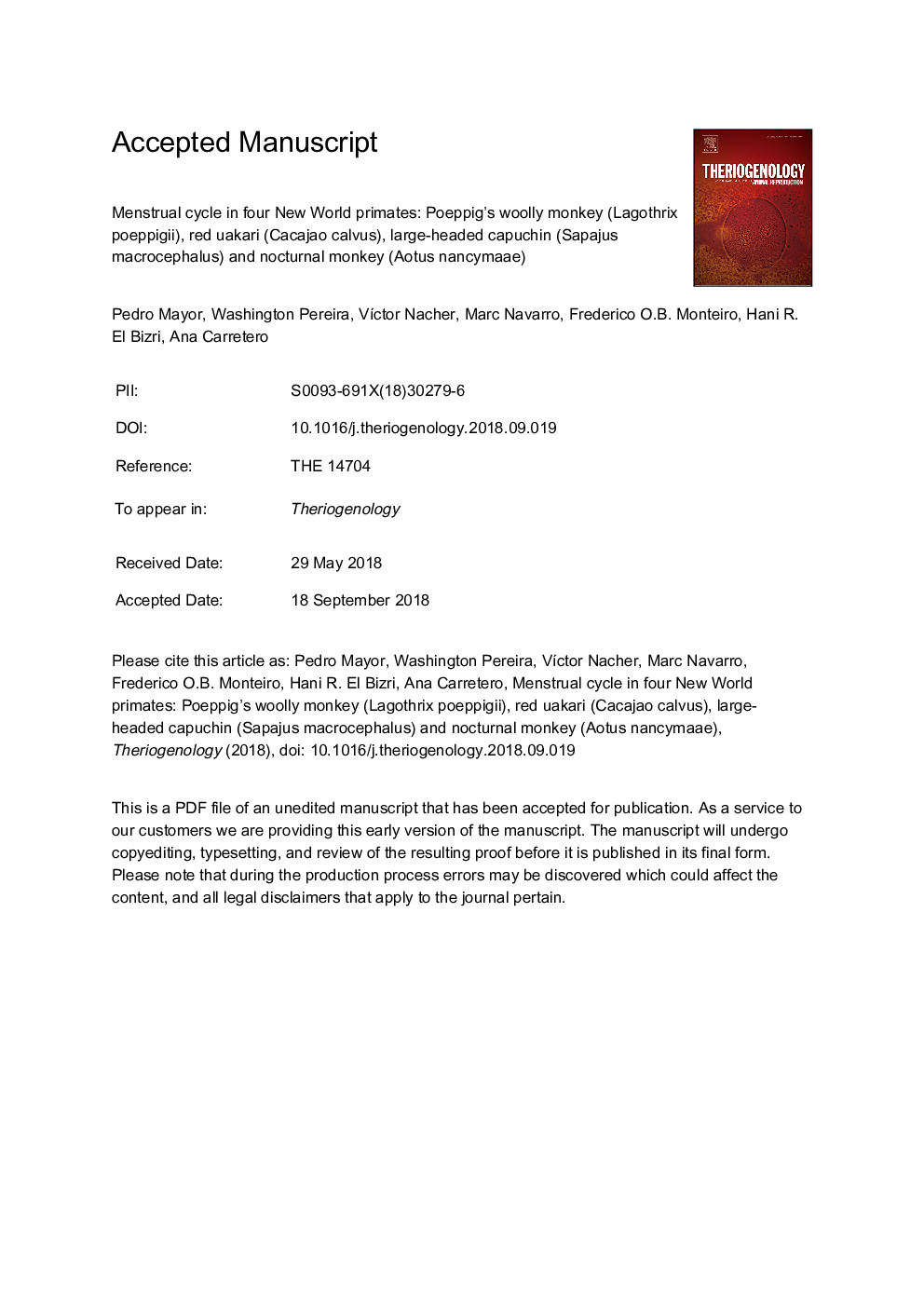| Article ID | Journal | Published Year | Pages | File Type |
|---|---|---|---|---|
| 11025943 | Theriogenology | 2019 | 39 Pages |
Abstract
Genital organs from 33 nocturnal monkeys Aotus namcymaae, 29 Poeppig's woolly monkeys (Lagothrix poeppigii), 21 red uakaris (Cacajao calvus) and 11 large-headed capuchins (Sapajus macrocephalus) were histologically analyzed in order to describe the endometrial changes related to the ovarian cycle. A. nancymaae and S. macrocephalus showed histological evidence of menstrual cycle with the detachment of the most superficial endometrium and the subepithelial reabsorption of the endometrial functional layer, explaining the extensive presence of both hemosiderin and fibrin clusters in the early follicular stages. In L. poeppigii, despite the presence of fibrin clusters promoting the remodeling of the endometrium, we did not observe the detachment of the functional layer of the endometrium, suggesting that this species presents a non-menstruating cycle. Finally, C. calvus showed no histological sign of menstrual phase. This reproductive information is useful to improve assisted reproductive techniques in non-human primates, and give us opportunity for comparative studies on the evolution of animal reproductive biology, including humans.
Related Topics
Life Sciences
Agricultural and Biological Sciences
Animal Science and Zoology
Authors
Pedro Mayor, Washington Pereira, VÃctor Nacher, Marc Navarro, Frederico O.B. Monteiro, Hani R. El Bizri, Ana Carretero,
